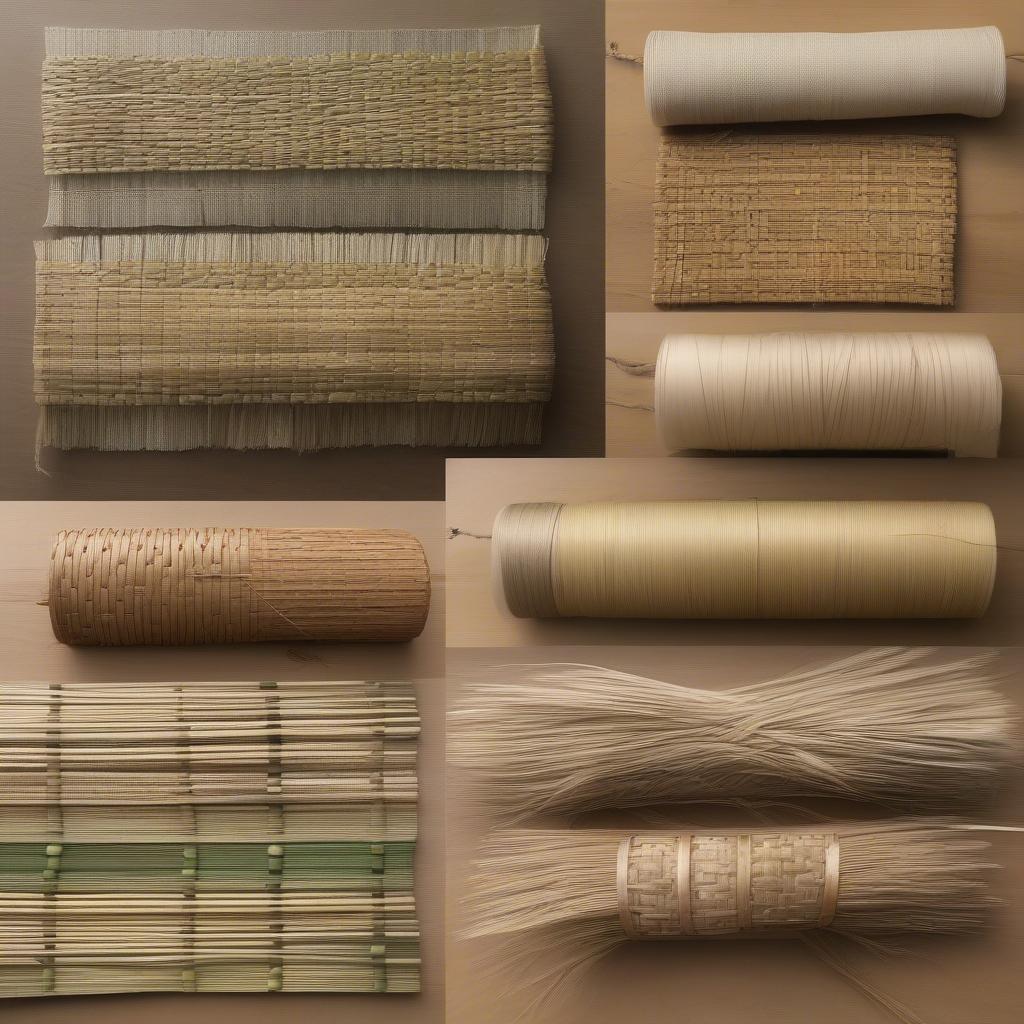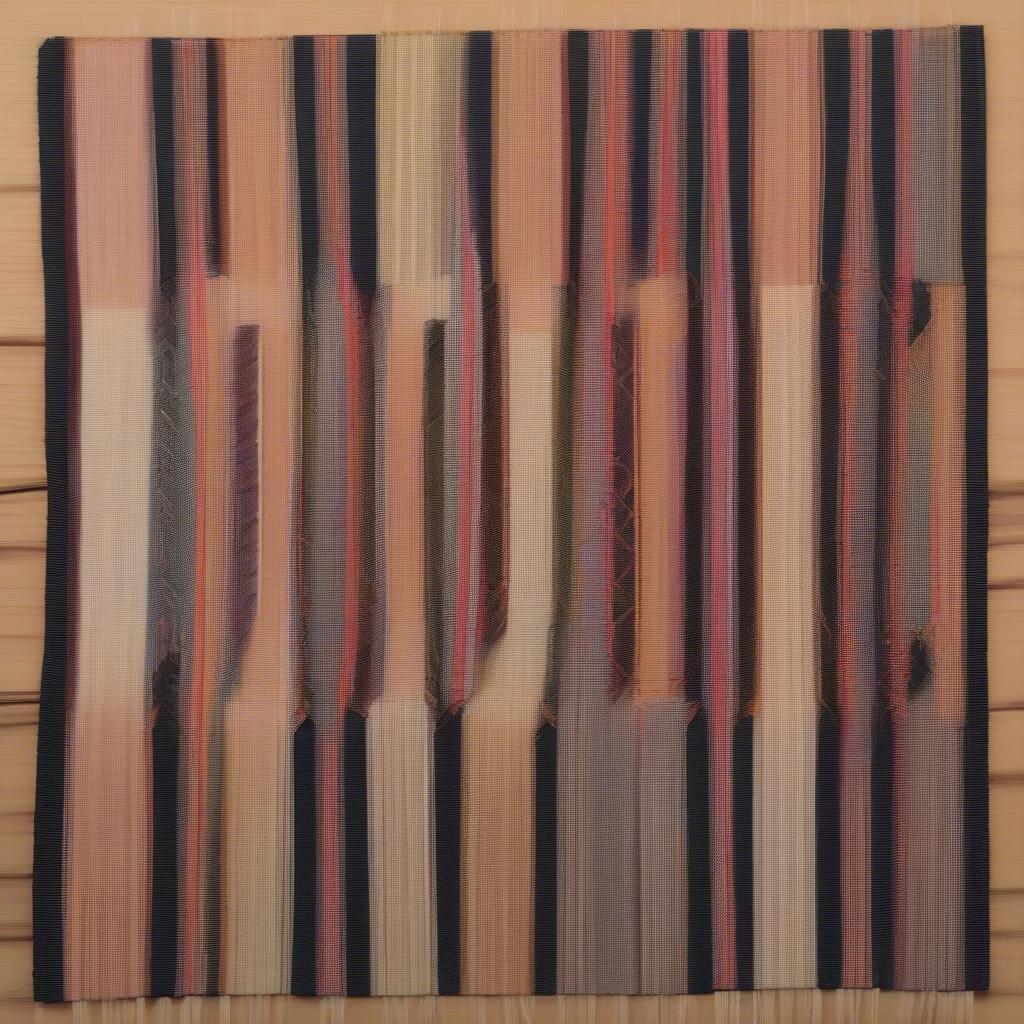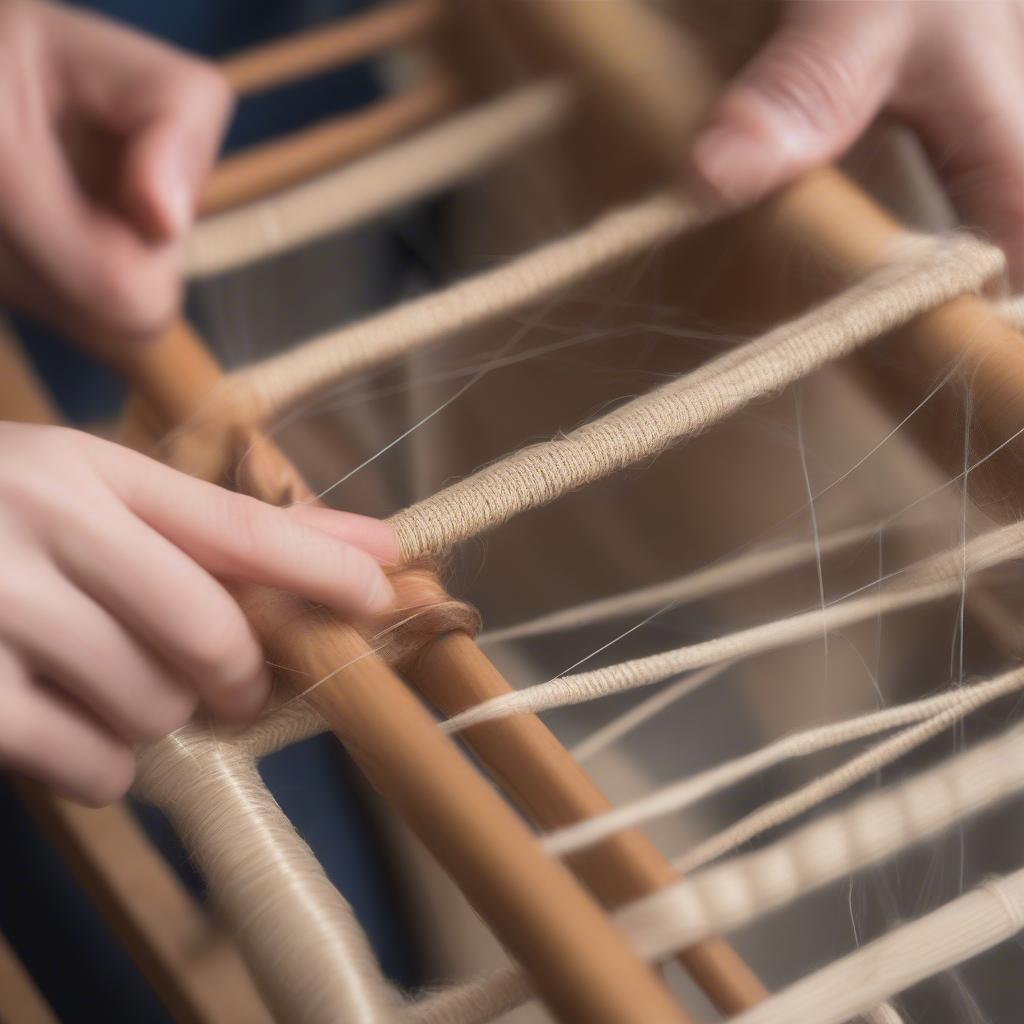Weave Chair
Ladderback Chair Re-Weaving Seats: A Comprehensive Guide
Ladderback chairs, with their signature runged backs, are a timeless classic. But over time, the woven seats can wear out, requiring re-weaving. This guide provides a comprehensive overview of ladderback chair re-weaving seats, covering everything from choosing the right materials to mastering various weaving techniques.
Understanding Ladderback Chair Seat Weaving
Ladderback chair seats are traditionally woven with natural materials like rush, reed, or splint. Understanding the different materials and weaving patterns is crucial for a successful restoration. Choosing the right material depends on the chair’s style, intended use, and your personal preference. For example, rush offers a robust and rustic look, while splint provides a finer, more delicate appearance.
Choosing the Right Materials
- Rush: A strong and durable material, ideal for everyday use.
- Reed: Similar to rush but slightly less robust, offering a more refined look.
- Splint: Thin strips of wood, providing a delicate and intricate weave.
- Seagrass: A durable and sustainable option with a natural texture.
 Ladderback Chair Weaving Materials: Rush, Reed, Splint, and Seagrass
Ladderback Chair Weaving Materials: Rush, Reed, Splint, and Seagrass
Preparing Your Chair
Before starting the re-weaving process, you need to prepare your chair. Remove the old weaving, clean the frame, and inspect for any damage. Repairing any loose rungs or cracks is essential for a stable and long-lasting result. This preparation ensures a smooth weaving process and prevents further damage to the chair.
Weaving Techniques for Ladderback Chairs
Several weaving patterns are commonly used for ladderback chairs, each offering a unique aesthetic. Learning these techniques allows you to choose the pattern that best suits your chair and personal style. Some popular techniques include the seven-step weave, the herringbone weave, and the figure-eight weave.
The Seven-Step Weave: A Beginner-Friendly Option
The seven-step weave is a straightforward pattern, perfect for beginners. It involves a simple over-and-under technique, creating a sturdy and visually appealing seat. This technique is also relatively quick to learn and execute.
The Herringbone Weave: A Classic and Elegant Choice
The herringbone weave creates a distinctive V-shaped pattern, adding a touch of elegance to your chair. This technique requires a bit more practice but results in a beautiful and durable seat.
The Figure-Eight Weave: An Intricate and Durable Weave
The figure-eight weave is a more complex technique but yields a remarkably strong and intricate seat. This pattern is ideal for chairs that will receive heavy use.
 Ladderback Chair Weaving Techniques: Seven-Step, Herringbone, and Figure-Eight
Ladderback Chair Weaving Techniques: Seven-Step, Herringbone, and Figure-Eight
Tips and Tricks for Successful Re-Weaving
- Soak your weaving material: This makes it more pliable and easier to work with.
- Maintain consistent tension: This ensures a tight and even weave.
- Use a weaving needle: This helps to guide the material through the rungs.
- Take breaks: Weaving can be strenuous, so take breaks to avoid fatigue.
Troubleshooting Common Weaving Issues
- Loose Weave: Increase the tension on your weaving material.
- Uneven Rows: Ensure you’re following the pattern consistently.
- Broken Material: Replace the broken piece with a new strand.
 Tips for Ladderback Chair Re-weaving: Soaking Material, Maintaining Tension, and Using a Weaving Needle
Tips for Ladderback Chair Re-weaving: Soaking Material, Maintaining Tension, and Using a Weaving Needle
Conclusion
Ladderback chair re-weaving seats can seem daunting, but with the right knowledge and techniques, it’s a rewarding project. By following this guide, you can restore your cherished ladderback chairs to their former glory and enjoy their timeless beauty for years to come.
FAQ
- What is the best material for ladderback chair seats?
- The best material depends on the chair’s style and intended use. Rush is durable, reed is refined, and splint is delicate.
- How long does it take to re-weave a ladderback chair seat?
- The time varies depending on the weaving technique and your experience, but it typically takes several hours.
- Can I re-weave a chair seat myself?
- Absolutely! With patience and practice, anyone can learn to re-weave a chair seat.
- What tools do I need for ladderback chair re-weaving?
- You’ll need weaving material, scissors, a weaving needle, and possibly a mallet.
- Where can I find weaving materials?
- You can purchase weaving materials online or from craft stores.
- How do I choose the right weaving pattern?
- Consider the chair’s style and your skill level. The seven-step weave is a good starting point for beginners.
- How do I care for a re-woven chair seat?
- Avoid excessive moisture and direct sunlight to prolong the life of the weaving.
Common Scenarios
- Scenario 1: A homeowner wants to restore a family heirloom ladderback chair.
- Scenario 2: A furniture enthusiast wants to learn a new craft and re-weave their dining chairs.
- Scenario 3: A business owner wants to repair and resell vintage ladderback chairs.
Related Articles
- Choosing the Right Weaving Material for Your Furniture
- A Beginner’s Guide to Chair Seat Weaving
- Advanced Weaving Techniques for Experienced Crafters
Call us at +84 388 951 999 or visit us at Hanoi, Vietnam or Tech Avenue, Suite 12, San Francisco, CA 94105, USA. We have 24/7 customer service available.
